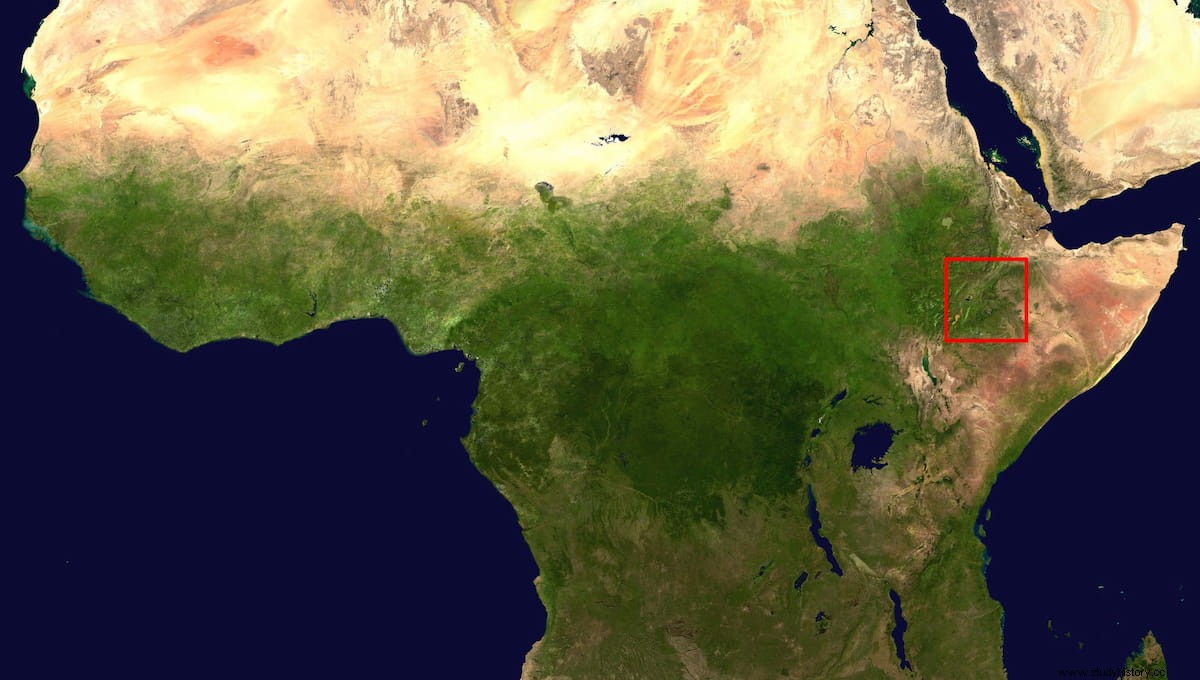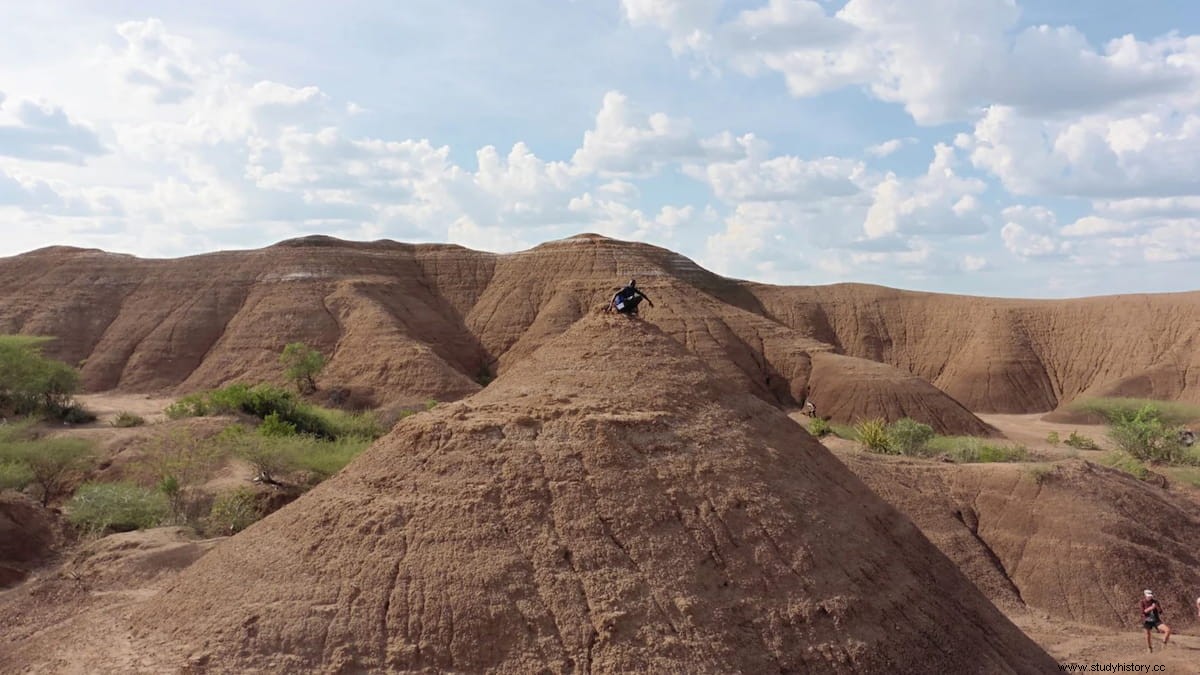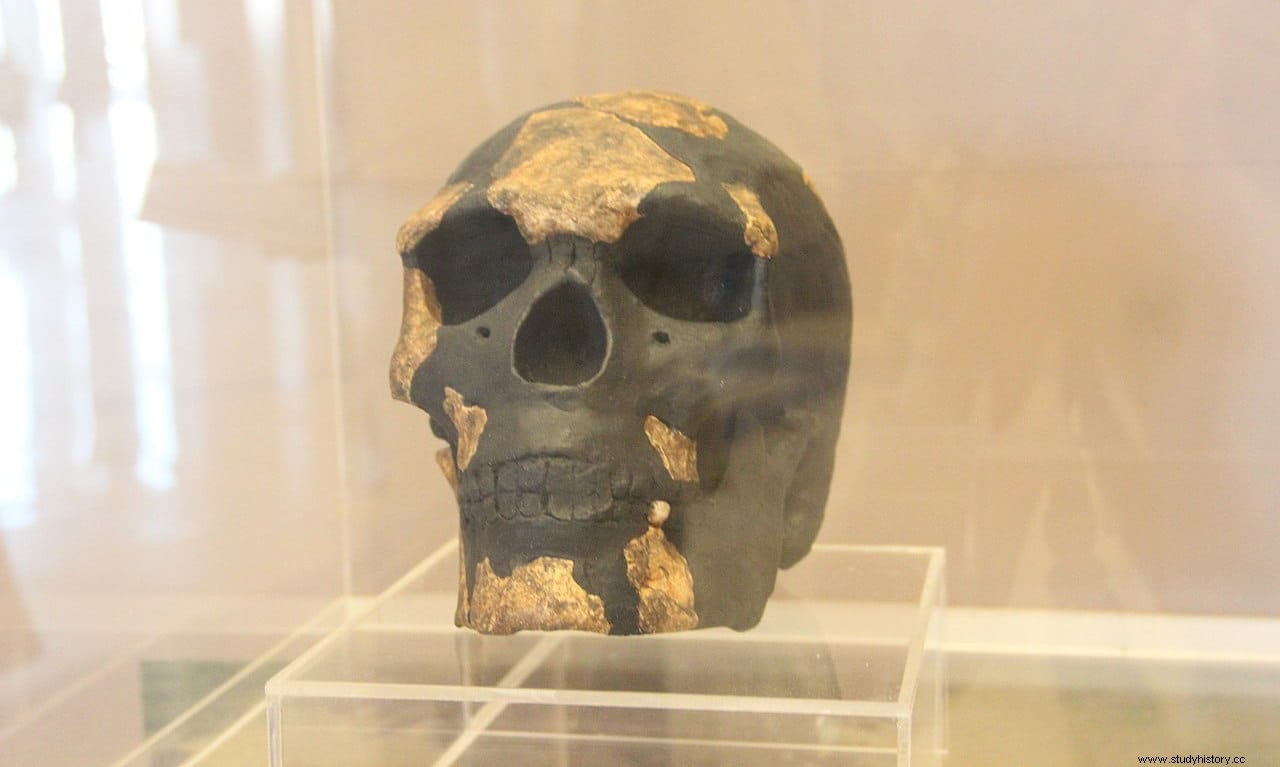The age of the oldest fossils from East Africa widely recognized as representing our species, Homo sapiens , has been uncertain for a long time. Now the dating of a huge volcanic eruption in Ethiopia reveals that they are much older than previously thought.
The remains - known as Omo I - were found in Ethiopia in the late 1960s, and scientists have been trying to precisely date them ever since, using chemical fingerprints from layers of volcanic ash found above and below the sediments. in which the fossils were found.
An international team of scientists, led by the University of Cambridge, has reassessed the age of the remains of Omo I and Homo sapiens as a species. Previous attempts to date the fossils suggested they were less than 200,000 years old, but the new research shows they must be older than a colossal volcanic eruption that took place 230,000 years ago. The results are published in the journal Nature .

The remains of Omo I were found in the Omo Kibish Formation, in southwestern Ethiopia, within the East African Rift Valley. The region is an area of high volcanic activity and a rich source of early human remains and artifacts such as stone tools. By dating the layers of volcanic ash found above and below the archaeological and fossil materials, scientists identified Omo I as the earliest evidence of our species, Homo sapiens .
Using these methods, the generally accepted age of the Omo fossils is less than 200,000 years, but there has been much uncertainty surrounding this date said Dr Céline Vidal of the Cambridge Department of Geography, lead author of the paper. The fossils were found in a sequence, under a thick layer of volcanic ash that no one had been able to date using radiometric techniques because the ash is too fine-grained .
As part of a four-year project led by Professor Clive Oppenheimer, Vidal and her colleagues have attempted to date all major volcanic eruptions in the Ethiopian Rift to around the time of the appearance of Homo sapiens , a period known as the Late Middle Pleistocene.

The researchers collected pumice rock samples from volcanic deposits and ground them down to submillimeter size. Each eruption has its own fingerprint, its own evolutionary history below the surface, determined by the path the magma followed Vidal said. Once the rock has been crushed, the minerals within it are released, and can then be dated, identifying the chemical signature of the volcanic glass that holds the minerals together .
The researchers carried out new geochemical analyzes to link the fingerprint of the thick layer of volcanic ash from the Kamoya Hominid Site (KHS ash) to an eruption of the Shala volcano, more than 400 kilometers away. Next, the team dated pumice samples from the volcano to be 230,000 years old. Since the Omo I fossils were found deeper than this particular ash layer, they must be more than 230,000 years old.
I first found out there was a geochemical match, but we didn't have the age of the Shala eruption Vidal said. I immediately sent the samples from the Shala volcano to our colleagues in Glasgow to measure the age of the rocks. When I received the results and discovered that the oldest Homo sapiens in the region was older than previously assumed, I was very excited .

The Omo Kibish Formation is a large sedimentary reservoir that has been poorly accessed and investigated in the past said co-author and co-director of the field research, Professor Asfawossen Asrat, from Addis Ababa University, Ethiopia. Our more detailed examination of the stratigraphy of the Omo Kibish Formation, in particular the ash layers, allowed us to raise the age of the oldest Homo sapiens in the region to at least 230,000 years .
Unlike other Middle Pleistocene fossils thought to belong to the earliest stages of the Homo sapiens lineage, Omo I possesses unmistakable modern human features, such as a high, globular cranial vault and chin said co-author Dr. Aurélien Mounier of the Paris Museum of Man. The new estimate of the date, de facto, makes it the oldest Homo sapiens in Africa without discussion .
The researchers say that although this study shows a new minimum age for Homo sapiens in East Africa, new findings and new studies may push the age of our species even further back in time.

We can only date humanity based on what fossils we have, so it's impossible to say this is the definitive age of our species Vidal said. The study of human evolution is always in motion:boundaries and timelines change as our understanding improves. But these fossils show how resilient humans are:that we survive, thrive and migrate in an area so prone to natural disasters .
It is probably no coincidence that our earliest ancestors lived in such a geologically active valley:it collected precipitation in lakes, providing fresh water and attracting animals, and served as a natural migration corridor stretching thousands of miles Oppenheimer said. Volcanoes provided fantastic materials for making stone tools, and from time to time we had to develop our cognitive skills when large eruptions transformed the landscape .
Our forensic approach provides a new minimum age for Homo sapiens in East Africa, but the challenge remains to provide a cap, a maximum age, for their occurrence, which is widely believed to have occurred in this region said co-author Professor Christine Lane, director of the Cambridge Tephra Laboratory, where she carried out much of the work. The new findings and studies may push the age of our species even further back in time .
There are many other ash layers that we are trying to correlate with Ethiopian Rift eruptions and ash deposits from other sedimentary formations Vidal said. Over time, we hope to better constrain the age of other fossils in the region .
